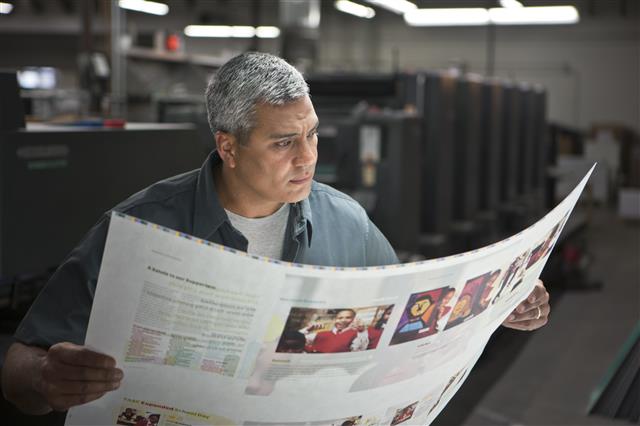Written by Howard Fenton, Senior Technology Consultant at NAPL
As we put the final touches on the NAPL Strategic Perspective 2011, we learned that while sales are on the mend and increasing, profits are not. As a result, leading companies are focusing more time and attention on their production workflows in an attempt to reduce manufacturing costs and increase profitability. The good news is that there are many ways to improve your workflow. While some require capital investments, others do not.
A few years ago, I worked for one of the franchise printing organizations and visited a number of sites to identify best practices. One of the best practices was streamlining the workflow to optimize where the equipment, raw materials and finished goods were placed. This is not a new subject, in fact it is an old idea. But in our fast paced and frenzied world as new equipment is added to the production floor it is often placed where there is room and not where it would work best. But today when every penny counts, more attention is focused on inexpensive ways to increase productivity and reduce waste.
This subject is often discussed by people with some grey hair (like me) as the physical plant layout. Those of you without grey hair may know this as one aspect of Lean Manufacturing. Regardless of what you call it, it refers to moving equipment, people, raw materials and finished goods so that the work flows faster through your plant and the chance of damage is minimized.
Blueprints and Spaghetti Diagrams
There are two tools that are useful to help understand your plant layout. If you are creating one from scratch, we often start with a floor plan or blueprint to scale with everything laid out. This can be done with paper and a ruler, with a computer, a drawing tool or by cutting up paper and laying it down on graph paper. Be careful with this last option. All you have to do is open a door and all your equipment can be blown away.
The second tool is called the spaghetti diagram. Think of it like a time elapsed camera taking pictures over time. It’s called a spaghetti diagram because it shows the paths everyone walks and how often they walk that path and where cross-over points occur.
The goals here are to reorganize your plant so that successive steps are near one another, you minimize the amount of paths that cross especially if delicate materials are being transported, and raw materials storage and finished good storage are near the doors. Like many things, it is one of those situations where you have to weigh the pros and cons of different solutions and make compromises.
The good news is that it does not require much time or investment. For a small shop, I can go from blank sheet to finished plan in a few days. Then all it takes is a weekend to move things around. We have seen changes to a physical plant layout result in savings from reduced rework of 50,000 or more due to less damage to raw materials, work in process or finished goods. That savings can go right to the bottom line and the increase in productivity can be as much as 4-6 more jobs completed a day. How much is that worth?
Howard Fenton is a Senior Technology Consultant at NAPL. Howie advises commercial printers, in-plants, and manufacturers on workflow management, operations, digital services, and customer research.
———–


